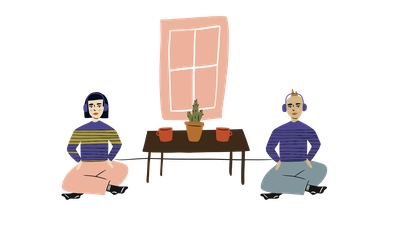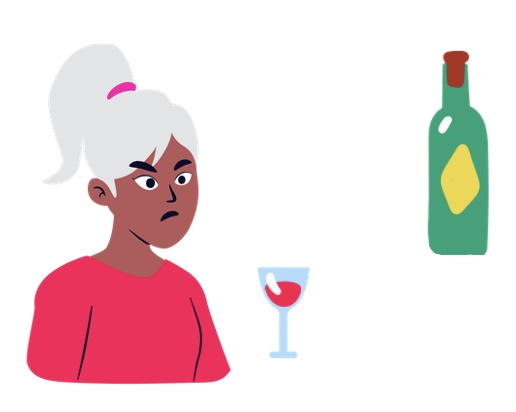Common Myths about Domestic Abuse
Misconceptions and misunderstandings about domestic abuse are common. Here we debunk a few of the most common misconceptions about domestic violence.
Myths and misconceptions about domestic abuse can prevent us from properly understanding the situation and from recognising important signs and differences between healthy and abusive relationships. That's why it's important to debunk them.
Fact checking
Only females are victims, and males are perpetrators.
There is some truth to that, because women are overwhelmingly affected by domestic abuse (BKA, 2021). But even though victims tend to be female and abusers tend to be male, that doesn't mean both genders can't switch roles.
However, domestic abuse is gendered: that means that while both women and men can be abused, the abuse looks different in both cases.
Domestic Abuse is a private matter.
Domestic Abuse has profound social implications that go well beyond the physical, psychological and economic effects on those directly affected. It also affects their immediate surroundings including friends, family and colleagues.
Keeping domestic abuse private can prolong the length of the abusive relationship. The duration of abuse and the time it took victims to tell another person about their situation for the first time is correlated. This means that victims who are able to talk about their situation sooner are more likely to get the help they need early and keep the abuse from escalating.
❗Many more people are affected by Domestic abuse than you might initially think. In Germany, for example, one in five (22%) people has experienced domestic abuse by a previous or current partner at least once in their lifetime.
Moreover, due to everything from missing days at work because victims are injured, to the loss in productivity that comes from the added strain of an abusive relationship, the societal costs of domestic abuse are huge. The annual societal total cost of domestic and sexual violence against women in Germany are ca. 54 billion Euro. In other words, domestic abuse costs us all 148 million Euro per day.
It’s only a migrant and / or working-class problem.
Although more precarious or risky living conditions increase the difficulty of dealing with an abusive situation, domestic abuse is universal and can affect anyone, regardless of nationality or socioeconomic background (BKA, 2021).
This only happens when they are drunk.
While alcohol consumption can contribute to escalate situations of abuse, data shows that it is not present in many abusive situations (BKA, 2021).
There’s a high rate of false domestic abuse allegations.
Studies have shown that the rates of false allegations are actually very low (Seith et al, 2009; Lisak et al, 2010).
One should also always consider how high the reputation costs are, for someone making such a claim. Someone who does not have a very strong motive for making a complaint has a lot to lose in the process.
Fighting at times is normal in a relationship.
Yes, to a certain extent fighting or quarreling in a relationship is normal. However, this differs from abuse in several ways. Most importantly, the way disagreements are resolved looks different in abusive and non-abusive relationships.
In non-abusive relationships, there are safe relationship arrangements whose goal is to solve conflicts:
Mutually agreed and respected
Only change when both partners agree
No punishments to the violation of rules
In abusive relationships, there are unsafe relationship rules imposed to exercise control over the other person:
Set by one person and obeyed by the other
Change is dependent on one person and not necessarily communicated
Punishments if rules are broken
She could’ve just left.
This is perhaps the biggest misconception around domestic abuse.
While a victim who chooses to leave an abusive relationship faces tangible, immediate and unavoidable losses, such as the loss of a home or possessions, financial security or social relationships, the gains are abstract, not assured and likely to take a long time, for example freedom from abuse or self-confidence and self-esteem.
Moreover, there is extensive research that shows that victims who leave their abusers are in very real danger of murder (BWSS, 2020). Domestic abuse is about control and a perpetrator who suspects they might lose control over their victim if they manage to leave is likely to escalate the abuse.
Test your knowledge
Last updated





